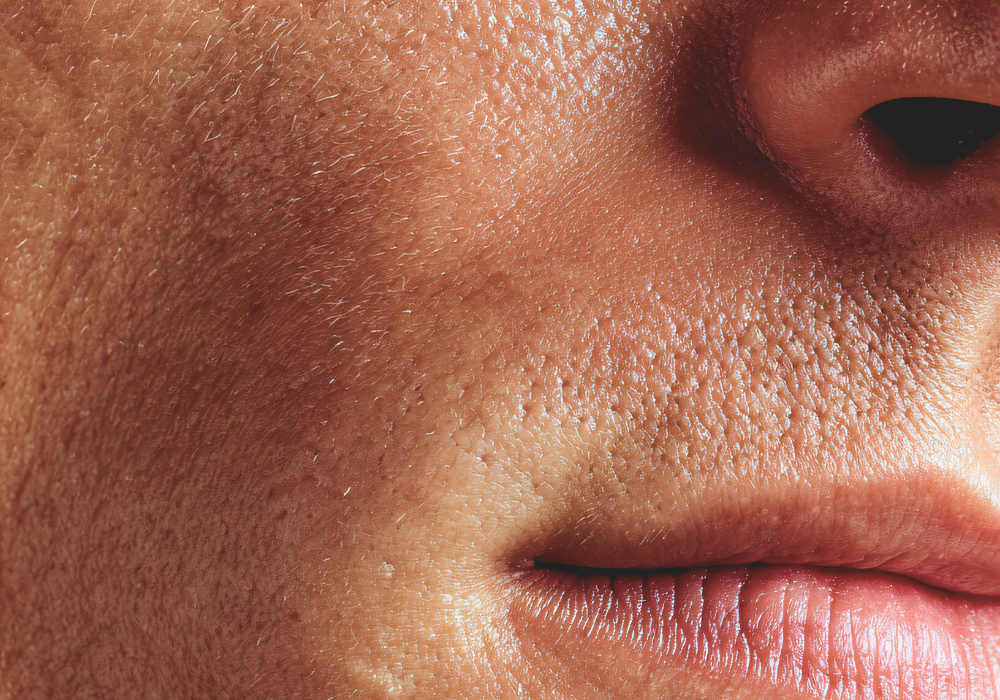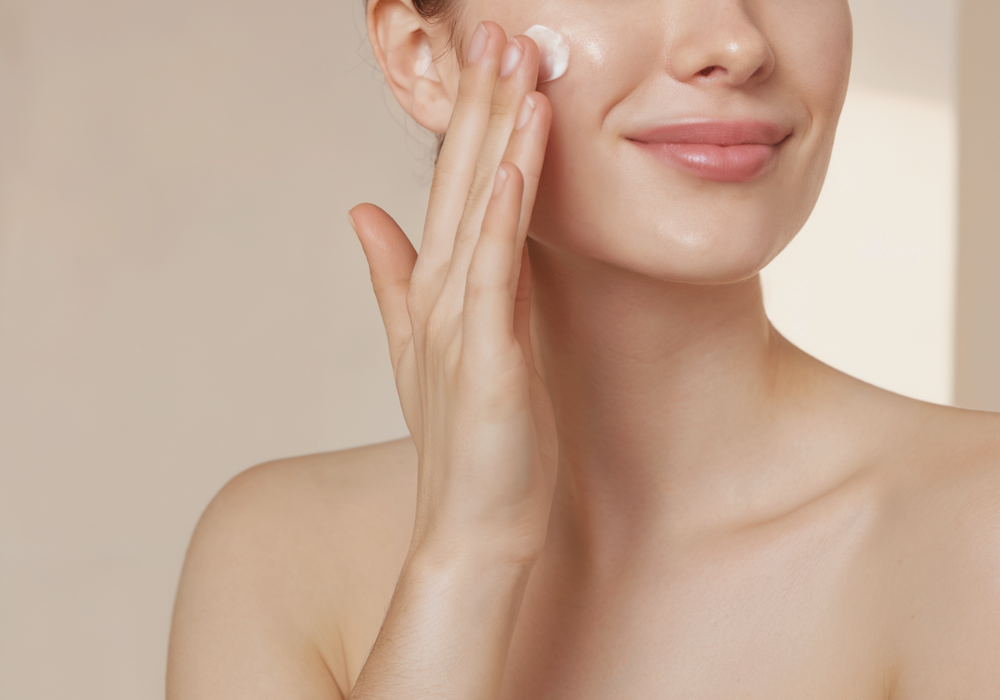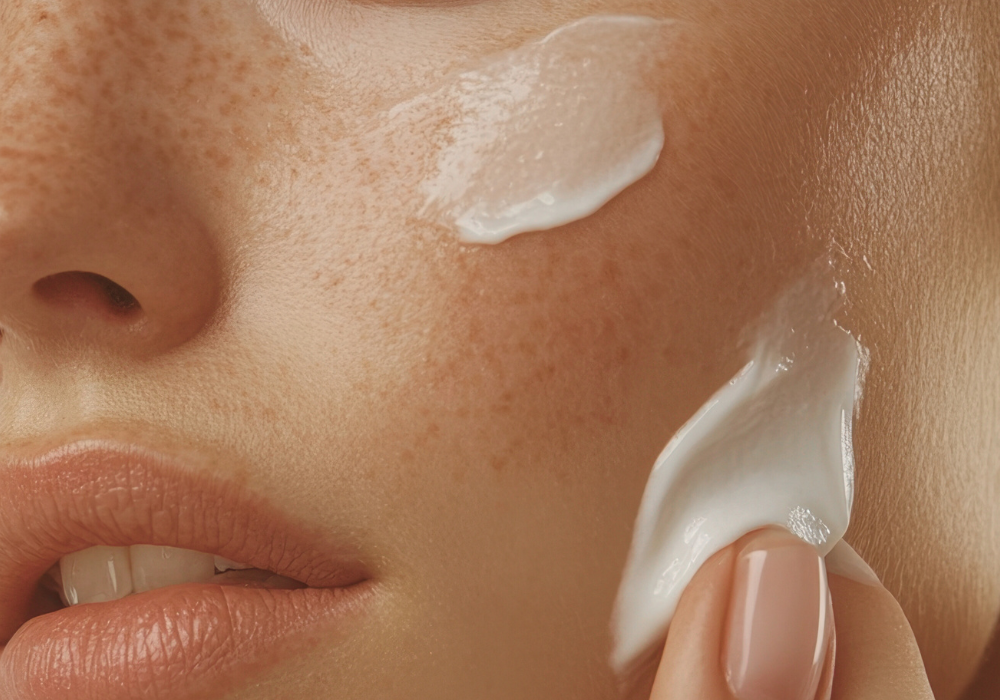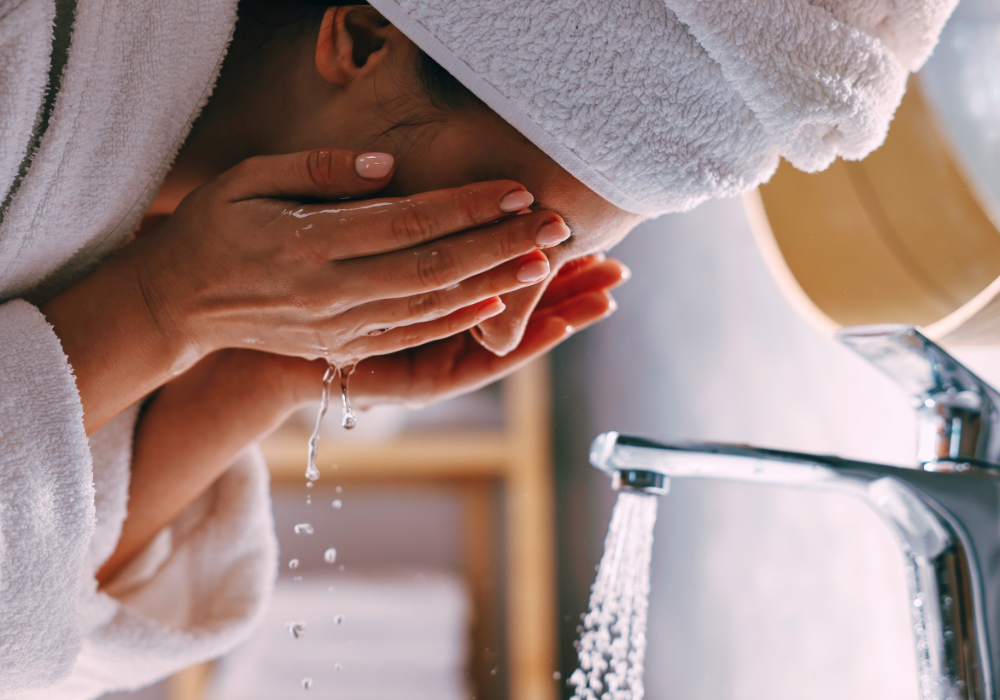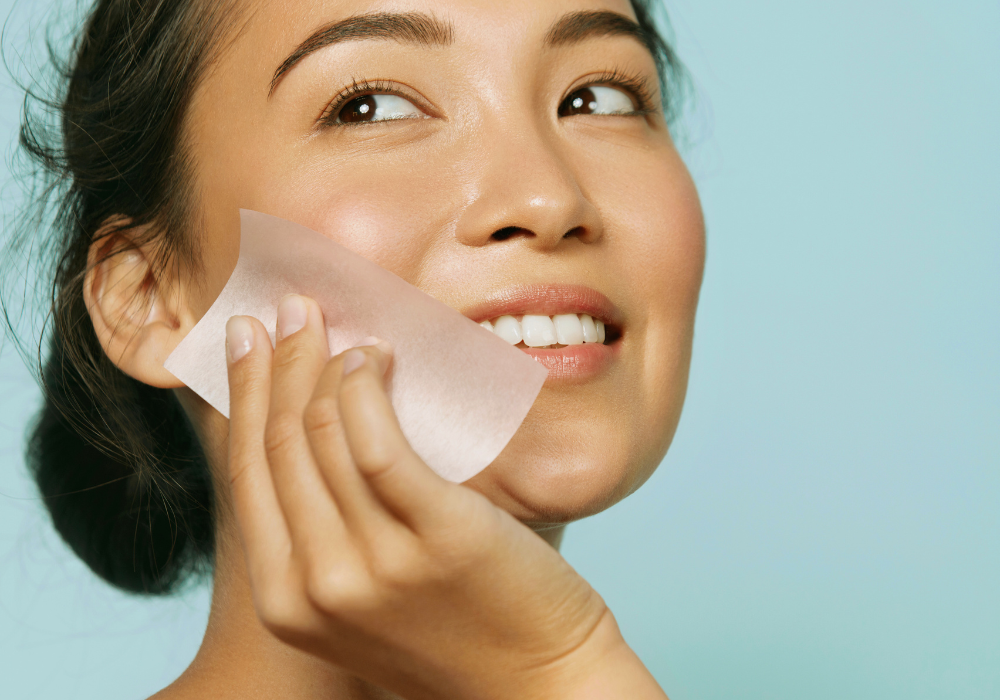Comprehensive data compiled from clinical research on male skin biology, pore congestion patterns, and science-backed treatment effectiveness
Key Takeaways
-
Men face distinct biological challenges - Men typically have larger pores and produce more sebum than women due to higher testosterone levels, making them statistically more susceptible to blackheads and pore congestion across all age groups
-
Skincare adoption remains critically low - Only 35% of men aged 18-42 wash their face daily, while 63% do not regularly use face wash, creating widespread preventable pore congestion that simple routines could address
-
Consistency delivers measurable results - Clinical studies show that targeted pore-refining treatments used consistently for several weeks deliver noticeable improvements, proving effectiveness of sustained science-backed approaches
-
Exfoliation helps prevent blockages - Proper chemical exfoliation 2-3 times weekly helps prevent pore blockages in men with oily skin, yet most men lack products with appropriate active ingredients at effective concentrations
-
Market growth reflects changing attitudes - The men's skincare market grows at 9.1% annually with 68% of Gen Z men now using facial products, indicating reduced stigma and increased recognition of pore care importance
-
Cost barriers limit access unnecessarily - While 46% of men cite cost as the primary barrier to skincare products, effective pore-clearing solutions like Kipi's Exfoliating Daily Cleanser at $28.80 with subscription deliver clinical-grade results at accessible price points
-
Ethnic variations require personalized approaches - Pore density varies significantly across ethnicities, with Brazilian men showing 91.26 pores/cm² versus Chinese men at 21.13 pores/cm², demonstrating need for science-backed formulations suitable for all skin types
-
Consistent routines help minimize pore appearance over time - Men who start consistent skincare in early adulthood can help minimize the appearance of enlarged pores over time, establishing early intervention as beneficial for long-term skin health
What Do Clogged Pores Look Like: Visual Identification Guide
1. Men demonstrate higher pore visibility than women due to biological factors
Men typically have larger pores and naturally oilier skin than women, making them statistically more susceptible to blackheads and pore congestion. This biological difference stems from higher testosterone levels that increase sebaceous gland activity and sebum production throughout adulthood. The larger pore structure becomes more visible when congested with oxidized sebum, dead skin cells, and debris, appearing as dark spots (blackheads) or raised bumps (whiteheads) concentrated on the nose, forehead, and chin areas. Source: Men's Health UK
2. Pore density varies dramatically across ethnic groups
Among men aged 18-29, significant ethnic variations exist in pore density measurements. Brazilian men show the highest pore density at 91.26±14.37 pores/cm², while Chinese men show the lowest at 21.13±9.49 pores/cm² across major ethnic groups. Indian men demonstrate 82.68 pores/cm², Caucasian men average 63.96 pores/cm², and other East Asian populations range from 21.13-69.64 pores/cm². These genetic differences explain why some men experience more visible pore congestion despite similar skincare habits, requiring personalized approaches rather than one-size-fits-all solutions. Source: National Institutes of Health
How Pores Become Clogged: The Science Behind Pore Congestion
3. Only 35% of men wash their face daily despite fundamental importance
Only 35% of men aged 18-42 wash their face daily, despite this being the most foundational step for preventing clogged pores and blackhead formation. This gap in basic cleansing habits directly correlates with widespread pore congestion issues among male populations. Regular, gentle cleansing helps prevent clogged pores and removes the combination of excess oil, dead skin cells, and environmental debris that accumulates throughout the day. Source: Practical Dermatology
4. 63% of men do not regularly use face wash for cleansing
Research indicates 63% of men do not regularly use face wash to clean their face, a critical step for preventing pore congestion and removing the combination of excess oil, dead skin cells, and environmental debris that accumulates throughout the day. This absence of proper cleansing products means most men rely on water alone or body soap, neither of which effectively addresses male skin's higher sebum production or maintains the skin's natural pH balance necessary for healthy barrier function. Gentle, pH-balanced cleansers formulated specifically for facial skin prove essential for managing pore health without triggering compensatory oil overproduction. Source: Tiege Hanley
Key Statistics: Prevalence and Impact of Pore Issues
5. One-third of young men maintain no skincare routine whatsoever
A third (33%) of men aged 18-42 have no skincare routine whatsoever, greatly increasing their likelihood of experiencing pore congestion issues, blackhead formation, and visible skin texture problems. This complete absence of routine care allows continuous buildup of sebum and dead skin cells within pores, creating conditions for persistent congestion that becomes progressively more difficult to address. The lack of any preventive measures establishes patterns that contribute to accelerated visible pore enlargement and skin health deterioration over time. Source: Practical Dermatology
6. Moisturizing adoption remains critically low at 19% among young men
Only 19% of men aged 18-42 report moisturizing daily, a step that helps balance skin and prevent overproduction of oil that leads to clogged pores. This low adoption reflects persistent misconceptions that moisturizers cause oiliness, when dermatological evidence demonstrates that adequate hydration actually regulates sebum production and prevents the compensatory oil overproduction that occurs when skin becomes dehydrated. Lightweight, non-comedogenic moisturizers prove essential for maintaining barrier function and preventing the dehydration-triggered excess oil that contributes to pore congestion in male skin. Source: Practical Dermatology
7. Cost concerns limit skincare adoption for nearly half of men
46% of men cite cost as the primary barrier to using skincare products, potentially limiting access to effective pore-clearing solutions despite available options at accessible price points. This perceived cost barrier often stems from exposure to luxury-positioned products rather than awareness of clinically effective alternatives. Multifunctional products that combine multiple benefits in single formulations deliver better value than purchasing separate cleansers, exfoliants, and treatments, making science-backed skincare accessible without premium pricing. Source: eSkinStore
8. Gen Z men show rapidly increasing skincare adoption rates
68% of Gen Z men (ages 18-27) now use facial skincare products, representing a significant increase from 42% in 2022 and indicating growing awareness of pore care among younger men. This dramatic adoption rate reflects reduced stigma around male grooming and increased recognition that skin health requires active maintenance rather than passive neglect. The generational shift suggests future male populations will experience fewer preventable pore congestion issues as early intervention becomes normalized cultural practice. Source: Mintel
9. Overall male skincare usage has increased 68% in two years
52% of US men now use facial skincare products, representing a 68% increase from just 31% in 2022 and demonstrating accelerated mainstream adoption of pore care practices. This market expansion reflects both changing cultural attitudes and increased product availability specifically addressing male skin concerns. The growth trajectory indicates pore-clearing solutions will become standard components of men's personal care rather than specialty categories, normalizing preventive approaches that reduce long-term congestion issues. Source: Mintel
10. Men's skincare market grows at 9.1% annually through 2030
The men's skincare market is projected to grow at a compound annual growth rate of 9.1% from 2022 to 2030, indicating rapidly increasing adoption of skincare regimens including pore-clearing products. This sustained growth rate reflects fundamental shifts in male consumer behavior rather than temporary trends, with increased education about skin health driving purchases beyond basic hygiene products. Manufacturers respond with formulations specifically addressing male skin characteristics including higher sebum production and larger pore structure. Source: BeautyMatter
How to Unclog Pores: Proven Treatment Methods
11. Results become noticeable within 4-6 weeks of consistent use
It typically takes 4-6 weeks of consistent use to see noticeable improvements in pore appearance with appropriate skincare products containing validated active ingredients. This timeframe aligns with skin cell turnover cycles and the gradual process of clearing accumulated congestion from within pore structures. Men expecting immediate results often discontinue effective products prematurely, while those maintaining consistent routines through the initial weeks experience progressive improvements in texture, blackhead reduction, and overall pore clarity. Clinical assessments measuring pore size changes universally employ minimum 4-week evaluation periods to capture meaningful data. Source: National Institutes of Health
Best Products for Clogged Pores: Ingredient Breakdown
12. Effective pore care requires simple, consistent daily application
Dermatologists recommend daily cleansing as the most basic and effective step for pore maintenance, yet only 35% of young men adhere to this practice despite its proven impact. The gap between recommended practice and actual behavior stems partly from confusion about proper product selection and application techniques. An effective routine requires only three essential steps: cleanse with appropriate face wash morning and night, exfoliate 2-3 times weekly with chemical exfoliants, and apply non-comedogenic moisturizer to maintain barrier function. This simplified approach proves more sustainable than elaborate multi-step protocols, with consistency delivering superior results to sporadic use of premium products. Multifunctional formulations that combine cleansing with exfoliation reduce routine complexity while maintaining clinical effectiveness. Source: Practical Dermatology
13. Science-backed formulations with proven actives deliver measurable outcomes
Clinical studies on pore size reduction typically involve 30-100 participants using consistent methodologies, with properly formulated treatments showing measurable improvements in pore appearance, congestion levels, and skin texture. These research protocols establish that effective products require specific active ingredients at validated concentrations rather than proprietary blends with undisclosed amounts. Beta-hydroxy acids (like salicylic acid at 0.5-2%) penetrate oil-filled pores to dissolve congestion, alpha-hydroxy acids (1-10%) exfoliate surface layers to prevent buildup, and polyhydroxy acids (1-4%) provide gentler exfoliation with simultaneous hydration benefits. The combination of these actives with hydrating ingredients like hyaluronic acid and barrier-supporting components like provitamin B5 addresses multiple pore congestion mechanisms without causing the irritation and excessive dryness that trigger compensatory oil production. The Exfoliating Daily Cleanser combines triple-action hydroxy acids (AHA 1%, BHA 0.5%, PHA 1%) to deliver effective exfoliation without harsh physical abrasives, addressing multiple pore-clearing mechanisms simultaneously while maintaining skin's natural pH balance. Source: National Institutes of Health
Frequently Asked Questions
Why are men more prone to clogged pores than women?
Men typically have larger pores and produce more sebum due to higher testosterone levels, creating ideal conditions for pore congestion. This biological difference makes blackheads and visible pore issues more common in male skin across all age groups.
How long does it take to see results from pore-clearing treatments?
Clinical evidence shows noticeable improvements typically appear within 4-6 weeks of consistent daily use with properly formulated products containing validated active ingredients. Consistent routines started in early adulthood can help minimize the appearance of enlarged pores over time.
What ingredients actually work for clearing clogged pores?
Beta-hydroxy acids (salicylic acid) at 0.5-2% penetrate oil-filled pores, alpha-hydroxy acids at 1-10% exfoliate surface buildup, and polyhydroxy acids at 1-4% provide gentle exfoliation with hydration. Products combining these actives at effective concentrations deliver superior results to single-ingredient approaches.
How often should men exfoliate to prevent clogged pores?
Proper chemical exfoliation 2-3 times weekly helps prevent pore blockages in men with oily skin. Frequency should be tailored to skin tolerance, with chemical exfoliants preferred over harsh physical scrubs that can create micro-tears and trigger inflammatory responses.
Why do so few men have effective skincare routines despite visible pore issues?
Only 35% of men aged 18-42 wash their face daily, while 33% have no routine whatsoever. Barriers include perceived cost (46% cite this concern), lack of education about simple effective approaches, and outdated cultural stigma around male grooming, though adoption rates show rapid improvement with 68% of Gen Z men now using facial products.
